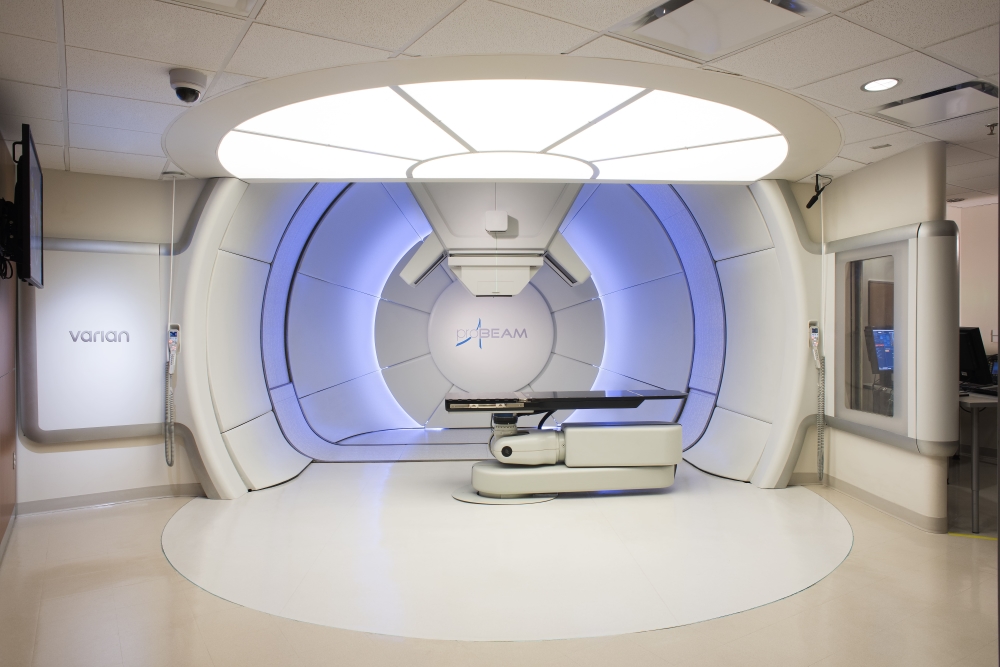
Cancer is fearsome, and so are many of the tools and techniques we use to fight it.
Surgery is invasive. Chemotherapy is cytotoxic. Immunotherapies put our body’s natural defenses on the offense and switch them into attack mode. Together, or individually, all of these modalities can be highly effective in stopping the progression of the disease.
Radiation is a natural phenomenon. We are exposed to low doses of radiation in our everyday lives through the air around us, the foods we eat and the buildings in which we live. When focused as a therapy and delivered in higher doses than we are naturally exposed, radiation kills cancer cells and shrinks tumors. As with the other approaches, radiation is a mainstay of curative and palliative cancer treatment.
We have been using radiation to destroy cancer for more than 100 years, and during that time there have been tremendous leaps forward. Since the middle of the last century, we have seen the emergence of linear particle accelerators with three-dimensional computed tomography and other powerful new imaging technologies that guide treatment. All of these have helped us become more effective in fighting cancer.
This is a particularly exciting time to be working in radiation oncology. We may be on the verge of another major breakthrough, and accomplishing something that has been elusive in the past. We may finally be able to deliver a powerful blow against cancer with less risk of injury to surrounding, healthy tissue.
The dosing dilemma
We have known for decades that if we can increase the dose of radiation, we improve the likelihood of cancer cure but increase the risk of damage to healthy tissue surrounding the tumor.
The sweet spot between achieving cancer cure without unacceptable normal tissue toxicity is empirically derived based on decades worth of observations. We stick with dosing that has worked for a majority of patients over the years with minimal side effects. But patients have varying degrees of radiation tolerance, and there are some patients who would benefit from higher doses. Today we lack the ability to adequately treat patients according to their individual radiation sensitivity or tolerance.
That may be about to change. An investigational treatment approach that may help us move beyond the limitations of normal tissue tolerance to radiation is clinically feasible for the first-time. If successful, it could lead to profound changes in cancer care, and prolong life for patients fighting the most intractable forms of the disease. Patients will ideally live longer, healthier lives with fewer treatment-related side effects.
The Flash effect
The University of Maryland School of Medicine, where I direct research in radiation sciences, is one of a number of clinical partners to pioneering radiotherapy company Varian. The company is testing an approach that looks and sounds like science fiction. Research points to success where previous approaches have fallen short.
Flash therapy* is the delivery of radiation at rates several orders of magnitude higher than what is currently used in conventional clinical radiotherapy. The approach creates the Flash effect, where the radiation lessens tissue toxicities associated with conventional radiotherapy, while still maintaining and/or improving local tumor control.
The Flash effect has been demonstrated in preclinical experiments using both proton and electron radiation. Because electrons are used to treat superficial tumors, such as skin cancer, and protons can treat deep-seated tumors throughout the body, it is likely that electron Flash and proton Flash will one day have different, complementary clinical indications.
Varian’s ProBeam proton therapy—which my team and I are working with—uses a high-definition “pencil beam” that enables the kind of precision radiation oncologists have wanted for decades. Protons deliver most of their energy at a prescribed, programmable distance inside the body, known as the Bragg Peak, so a high dose is delivered to the tumor and much less of it to healthy tissue. That means patients may experience fewer side effects, improved long-term outcomes, and enhanced quality of life.
There is still plenty of work to be done, but early signs suggest we may be moving into a new era of cancer treatment. This is the thinking among the FlashForward Consortium, a global group of institutions designing studies and sharing research protocols to advance the science and clinical translation of Flash therapy*.
Making progress against cancer often involves taking risks. But in the hope of a good outcome, we work to minimize risk wherever we can. This is especially true when it comes to fighting cancer. We want better survival rates in the short and long term. We want to restore people’s quality of life. But we need to avoid creating new problems while we do it.
This is especially true in the field of radiation oncology, where there is a pressing need to reduce the risk of injury to surrounding tissue — especially when tumors take hold in sensitive areas like the lung. I’ve spent years studying what fibrosis and pneumonitis do to healthy tissue, and these are risks we must avoid whenever and however we can.
Patients need and deserve the best possible treatment options for cancers that have been compromising quality of life for far too long. It’s exciting to be on the cusp of a potential breakthrough that will help us offer one of the most effective options, but with far fewer risks.
*Flash therapy is under development and not available for commercial sale.
About Dr. Isabel Lauren Jackson
Dr. Isabel Lauren Jackson is the Marlene and Stewart Greenebaum Associate Professor of Radiation Oncology and the Director of the Division of Translational Radiation Sciences within the University of Maryland School of Medicine. Dr. Jackson’s subject matter expertise is related to radiation-induced normal tissue damage, pharmaceutical development to treat radiation-related health effects, and medical preparedness for nuclear and radiological events.
She is a consultant to Partner Therapeutics (Boston, Massachusetts), PureTech Health (Boston, Massachusetts), Cellphire Therapeutics (Rockville, Maryland), Myelo Therapeutics (Berlin, Germany), and Kallyope (New York, New York) and serves on the Scientific Advisory Board for Humanetics Corporation (Edina, Minnesota).
Photo: Varian













